
haute living video experience. milan 2014.
thank you [ haute living ] chicago / video: nate ross

thank you [ haute living ] chicago / video: nate ross

We get asked a lot about what’s trending though lately the big topic is who’s putting more emphasis on their online capabilities and what’s driving traffic to the website. For example in March [shades of blue] in conversation with Matteo Alessi, international sales and development director for Alessi, the pop-up concept was mentioned as a way to build face-to-face relationships that transfer to online purchases.
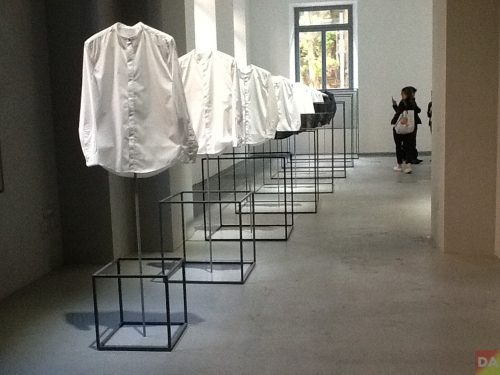
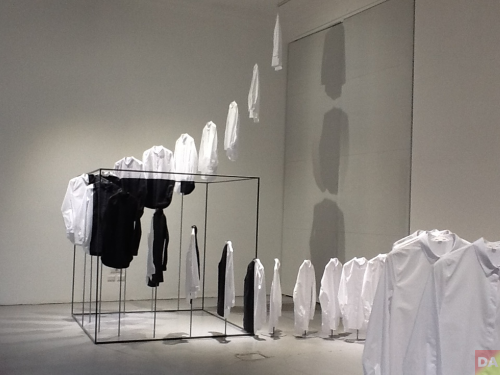
Again, a few weeks later, an enticing pop-up presented itself in Milan where clothing label COS and Japanese design studio Nendo created an installation in the Brera district in a very cool space. It was really more Nendo installation than COS. The ground floor space was empty except for the Nendo’s installation (above) and the basement a huge display of Nendo’s work. COS made it’s presence known with just a smattering of simply minimal accessory collections near the ground floor entrance. It was enough.
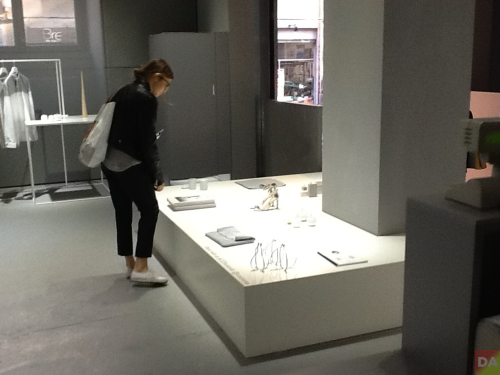
cos assessories near ground floor entrance
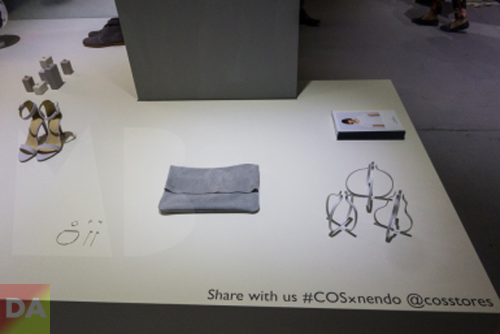
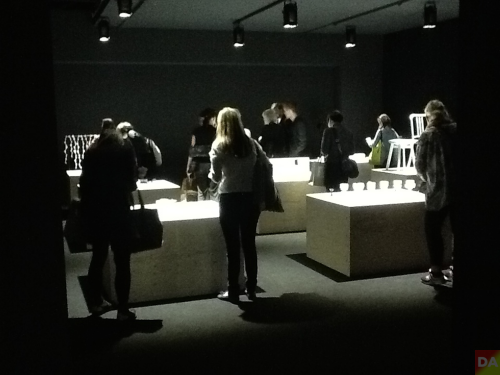 nendo display in basement
nendo display in basement

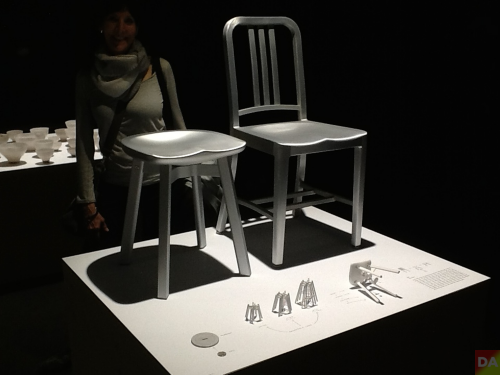 su | emeco | 2014
su | emeco | 2014
We really went to see Nendo but discovered COS. COS (Collection of Style), owned by H&M, a best-kept secret that everyone in fashion seems to know launched with a catwalk show at the Royal Academy in 2007. An up-market brand positioned at a slightly higher price point to that typically associated with H&M’s fast fashion offerings.
H&M started their guest-designer collaborations in 2004 with Karl Lagerfeld. Then Stella McCartney and avant-garde Dutch designers Viktor & Rolf in 2005. COS partnering with Nendo works well if you’re familiar with Nendo’s simple and almost timeless solutions. Current without being trendy, very Nendo-like.
Until recently, if you lived in the US you had to go to London or Paris to purchase COS because they were in Europe only and sold nothing online. That’s all changed. COS is currently operating across Europe and Asia with a total of 82 stores worldwide and will open its first store in the USA, New York, in spring 2014. Miami might be the next store.
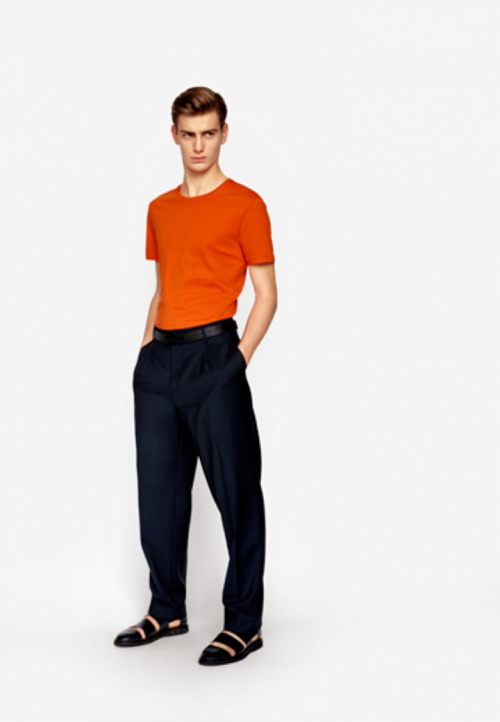
The COS press kit consisted of a well-designed and expensive limited-edition looking spring & summer 2014 magazine (above) and a small creative little brochure with the story behind the pop-up collaboration. The magazine was in English, the brochure in English and Italian, with Italian store locations in back: Bologna, Firenze, Milano, Verona and coming soon, Torino. The details draw you in.[ nendo ] [ cos ]
<a href=" about ron kovach
about ron kovach

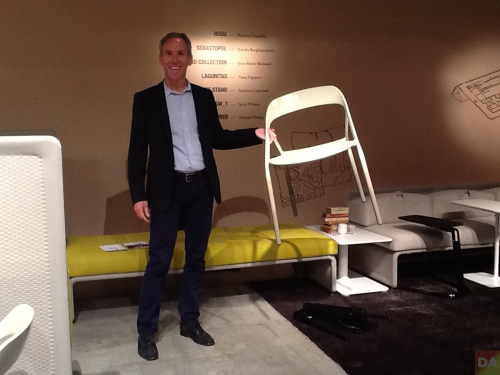
above> Pretty sure the Carbon Fiber Chair by Michael Young for Coalesse is the production object of Milan 14. Beautiful in concept, execution and weight, or lack thereof. Design director John Hamilton could probably hold ten chairs at arms length. -interview forthcoming. Hall 16.
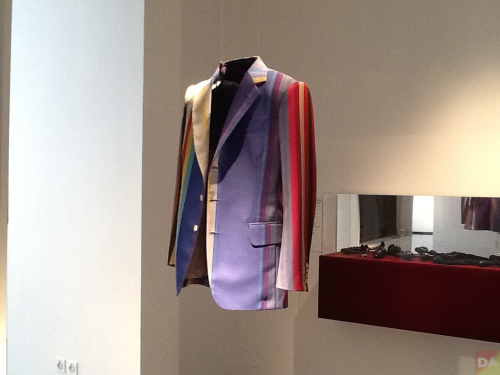
Sony partners with Wallpaper Handmade. 70+ one-of-a-kind objects of furniture, fittings, fashion and food. above> ‘Clerkenwell Coat’ by Wallace & Sewell, Gieves & Hawkes and Designtex. via San Gregorio 39.
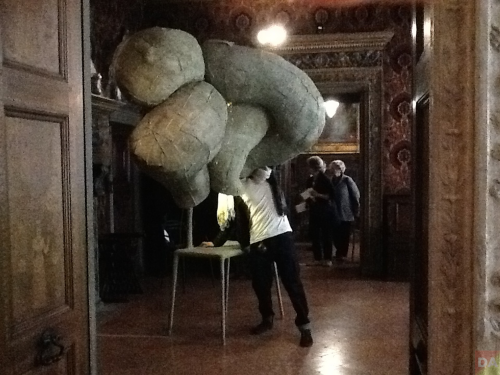
Rossana Orlandi presents two venues. above> exhibition ‘Untold’ with 10 international designers including nacho carbonell – interviews forthcoming. via Gesu 5. below> at her studio. via Matteo Bandello 14.
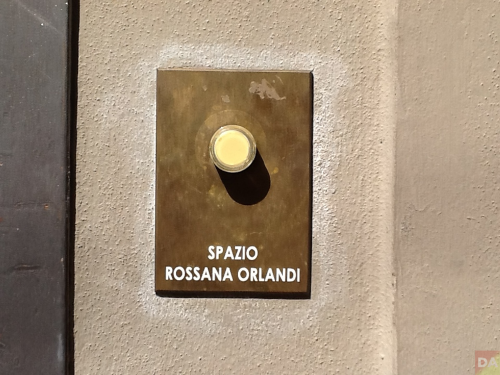
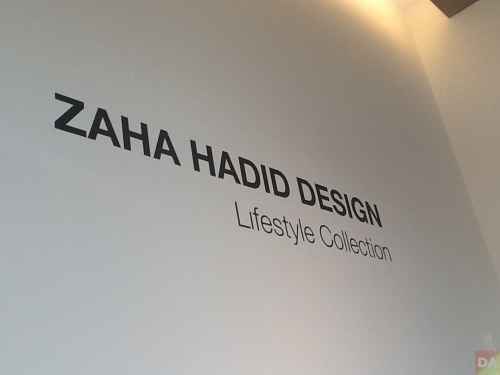
above> Zaha Hadid debuts a collection of objects. they wouldn’t let us photograph anything so you have to see it in person. better that way anyway. via Rivoli 4.
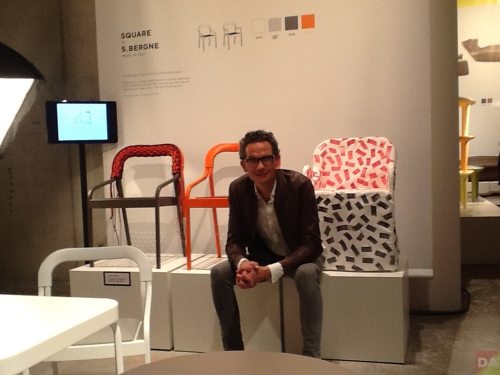
above> London designer Sebastian Bergne with ‘Square’ for Tog – interview forthcoming. via piazza Gae Aulenti – check out the entirely new piazza.
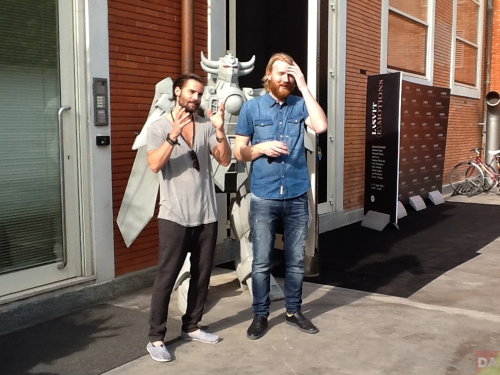
above & below> Lasvit puts together a Milan 14 award winning installation. ‘Moulds’ by Jan Plechác and Henry Wielgus. via Standahl 35.
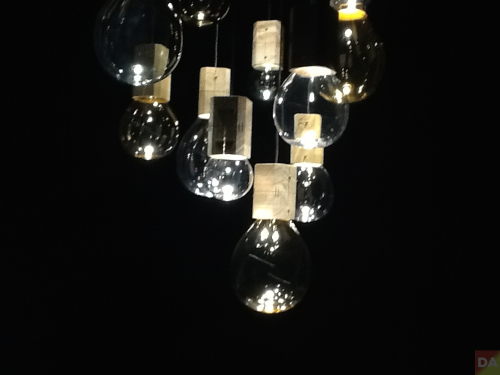
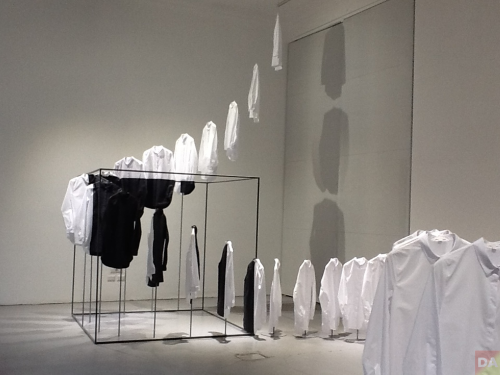
above & below> COS commissions Nendo to create a temporary concept store. Very minimal and storytelling. Very Nendo.
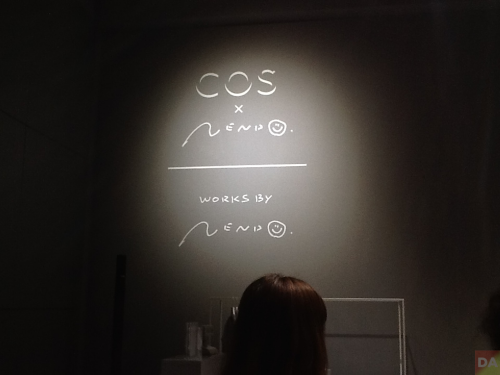

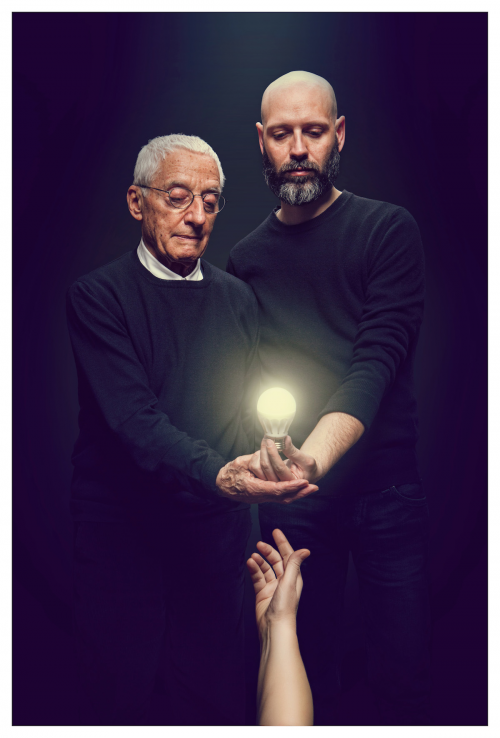 alessandro mendini | joe volutto
alessandro mendini | joe volutto
“Give me a bright idea, blessed lamp!”
A lot of people on pilgrimage at the Milan Design Week, looking for sparks and inspirational ideas, relentless run through the streets of the design, touching all the “stations” not to be missed. JoeVelluto (JVLT), with Maestro Alessandro Mendini, offers the “station” cornerstone of this pilgrimage: the exhibition ‘Amen/Lumen’ at the space MARS Milan. Anyone who comes will be able to reach this goal and find the real Enlightenment.
event: AMEN/LUMEN | curated by beppe finessi
when: vernissage 9>10 april from 6.30p
where: MARS | via guido guinizelli 6 20127 milan
[ atelier mendini ] [ joe volutto studio ]

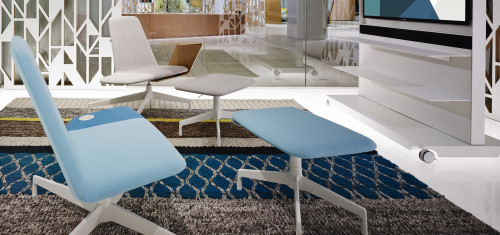
[DesignApplause] We’re are with Haworth designer Nicolai Czumaj-Bront. Nicolai, congratulations, a Best of Neocon Silver. Please tell us about your Harbor Work Lounge collection.
[Nicolai Czumaj-Bront] Thank you, very proud about the award. We are introducing this collection for Haworth. Technology today allows us to work anywhere and how we want to. Because of that, we bring a lot of stuff with us. Bag, notebook, iPpod, tablet, computer, laptop or your drink. Whatever you need to feel comfortable to work the way you want. Now you can work in a private space, collaborative space, hotel lobby / rooms, at home even…
The Work Lounge is meant to allow you to work where you want, how you want to work and have the things with you that let you do the work you want to do. It has a sliding tablet that slides away from and toward you to give you room to work. It has the wing, where you can put your other items next to your phone or tablet. Even a cup-holder to provide a place for you to put your drink. The ottoman even has a cup-holder as well in it. It also has high adjustability. This way, if more people come into a space, you can have someone sit in the ottoman and get more function out of it. There is a lot of variability in the options. You can do a partial upholstered, an exposed version…you can do veneer or laminate.
[DA] What is the exposed version?
[N] The exposed is the plywood form that you would see visually. You would also have a pad and a seating area as well as a little sway pad next to you. The exposed version would be fully exposed plywood. You can really dress it up or down. It has kind of a unique look to it, but also a lot of variability in terms of application, usability and aesthetics. It changes the way we look at lounges these days and how we work at them. How we can deal with different types of spaces, but also has something that is re-adaptable.
[DA] Yes, these are beautiful and lean. They almost look like they are wanting to fly.
[N] Yes. I think in airports they would go over quite well. Then also, you see the suede on the wing, which has a dual purpose. With a wool covered wing you would have slippery gadgets falling off if you twisted or moved around. But the suede keeps things where they need to be. It’s also water resistant so if you spill, it won’t stain the fabric.
The lounge and ottoman is really a nice composition of the aesthetics, the function of it. The heights and the posture are really a hybrid between task seating and lounge seating. You can be upright in this. A little bit more than a lounge, but not so much as a task chair. Everything between the function and the ergonomics of it are balancing between those two worlds of work and home.
[DA] What’s your relationship with Haworth?
[N] I’m an internal designer with Haworth. We have a program at Haworth where we explore 3-5-10 years out. If things make sense at the time, we move them forward. We look at how people are going to be working and how things work. It made sense to introduce the ensemble now as technology has evolved to allow us to work in many places. I had this concept about 2 years ago and have been working through it. We went 100% in January to bring it to NeoCon for the show. It’s been a fairly quick pace for the program.
[DA] Being in-house, is this thing built on things that are really Haworth-natural or are there new physical properties that bring innovation?
[N] Very Haworth-natural and easy to create as we are familiar with the materials and pieces. For example, you can do left or right handed. The nice thing about this is that it’s one piece of plywood. So inside the molded foam is plywood. But then they can either cut the left or right side out. Using the manufacturing capability to allow for the variability in application or function. Even the tablet is actually a larger piece of plywood they can cut from left or right hand. It’s simple tooling that’s been around for ages, but it’s about rethinking it and how we can do it differently to provide designers more variability in the aesthetics.
[DA] What did you learn while working on this project?
[N] Things can be beautiful and still elegant and pass all of the hundreds of thousands of BIFMA standards.
That’s always the goal. Everyone always wants it lighter, elegant and beautiful, but it still has to pass all of the standards that get greater and greater every year. In some ways, it was a reward for myself and the team that we were able to take the original sketch to the computer program while maintaining the aesthetics without sacrificing anything to pass the requirements.
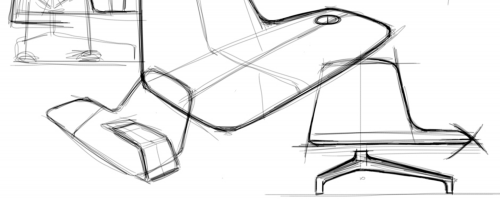
[DA] The solution is so clean and light. You should do a sofa. How did you create the thin profile?
[N] Right now we’re talking about maybe doing a beam for this piece. You can imagine an airport having these two wings on the outside and a middle piece in between. We’re quite far along with all the pieces we need. A few more, we might be able to do this. After that, I think we’ll see a lot more evolution in home office products. With technology now, we’ll see how things go. We have some ideas in the works. It just depends on the market and if they are ready for it.
[DA] What’s really exciting and cool right now in the world of design?
[N] I’m really curious to see what will happen with 3D printing and how it will lend itself more to some of the big manufacturers. Imagine doing a chair that doesn’t have aluminum or steel tooling. Imagine making that one-off chair so each person could have a task chair that fits them more comfortably. What would it mean for more mass production? I’m really curious to see how that evolves as we go forth. There’s a lot of opportunity there to realize the ability to make things adjustable per the user.
[DA] Creative minds are really going to do things with it.
[N] The other thing is just sharing with technology. Just the evolution we’re doing internally at Haworth and what that will mean in terms of the workplace. Working wherever you want to. The beach, the park, a museum. I’m curious what will happen with technology both in terms of digital but also in terms of production. What that will mean for all industries in general. What it means for the flexibility of people. They can be more transient and work where they want to work while having more of a lifestyle. Merging those worlds.
[DA] Have you been with Haworth for a long time? Do you do other things besides furniture?
[N] I primarily do furniture and live in Chicago. I’m from here originally. I worked for a small consultant agency for a few years. I’ve been at Haworth almost 8 years. I’ve worked on everything from tables to task seating to more high-end things such as Haworth collection pieces. But mostly doing furniture.
I also do personal stuff such as work with reclaimed wood. I’ll take it and bind it together. All the old wood that has been weathered or rained on gets C&C cut it to reveal all these new colors and textures. The idea here is balancing how much control do I really have. I’m putting the wood together, but in the end, it’s the colors and grains that allows the wood to be what it is. It’s kind of imperfection, but that’s the beauty of it.
[DA] Are these winding up as sculptures?
[N] They are more stools and tables. But I’d like to do more sculptural pieces. Working with the wood the way I do, it’s wonderful how it evolves and how the materiality shines through when you let it be its own material and not try to control it so much. In that mindset I’m kind of working with this raw material with a very high-end manufacturing process which is very precise.
[DA] Like ‘I really want to make a grasshopper, but the grain turned it into a kangaroo.’
[N] Right, kind of just let it be what it is.
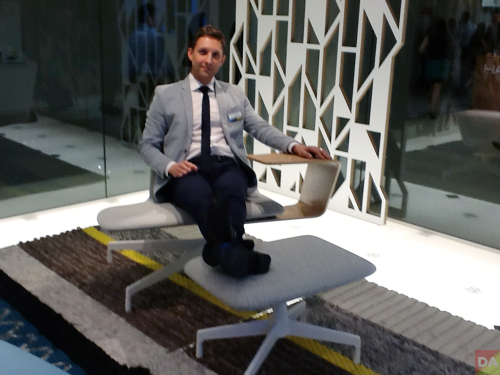 nicolai czumj-bront | haworth design studio
nicolai czumj-bront | haworth design studio
[ haworth ]

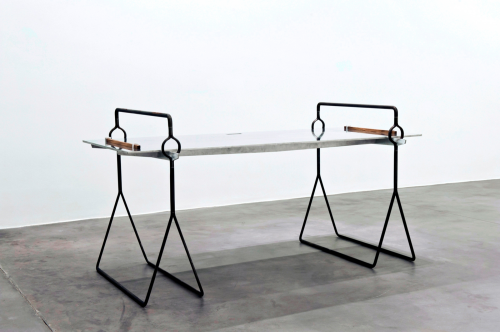 desk 2 | mac baroud & marc dibeh | artfactum gallery | 2012
desk 2 | mac baroud & marc dibeh | artfactum gallery | 2012
The global forum for design returns with the best of the new, the cream of the classics and some of the most exciting ideas in the field. In December 2013, nearly three-dozen galleries from around the world will gather in Miami Beach to present modern and contemporary collectible design. “We have consistently expanded our program over recent years,” says Marianne Goebl, Director of Design Miami/. “This December, visitors to the fair will discover the widest range of historic positions to date as well as new work, which will debut in Miami.”
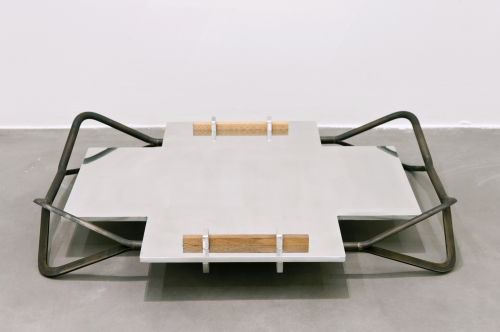 tray |mac baroud & marc dibeh | art factum gallery | 2012
tray |mac baroud & marc dibeh | art factum gallery | 2012
Key design references from the 20th century include a full-scale house by JeanProuvé from 1944, which will be exhibited, for the first time in public, by Galerie Patrick Seguin. Galerie Downtown is showing a resonant collection of works by Charlotte Perriand inspired by her friendship with the Borot family, and her relationship with their house in Montmartre which she reconfigured and furnished for their changing needs over many years. Didier Ltd will pay homage to the game changing 1973 Jewelry as Sculpture as Jewelry exhibition from the Institute of Contemporary Arts in Boston, including several unique pieces on display from the original show.
In the contemporary program, women in design are strongly represented this year, with Demisch Danant focusing on Maria Pergay, whose production of spare, organically inspired work in metal spans the last half century. Carpenters Workshop Gallery will bring new works by Johanna Grawunder, a designer redefining the use and presence of lighting in the interior. New works by Hella Jongerius will be presented by Galerie kreo, showcasing both her particular sensibility for color and her melding of craftsmanship with modern technique. A joyous curiosity, the work of pioneering German toy maker Renate Müller continues to delight; R 20thCentury will use the fair as a platform to preview her latest works.
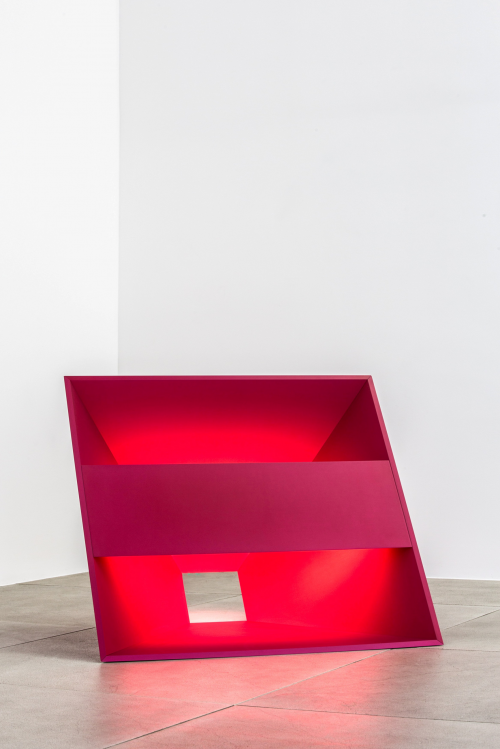 pink void | johanna grawunder | carpenters workshop gallery | 2013
pink void | johanna grawunder | carpenters workshop gallery | 2013
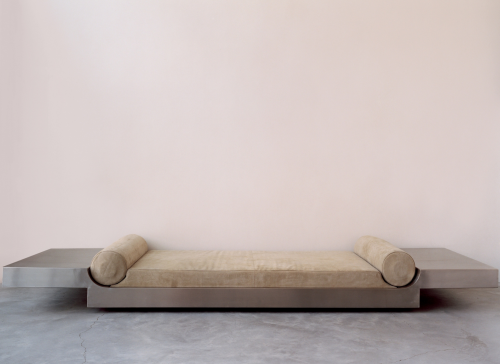 lit banquette | maria pergay | demisch danant | 1968
lit banquette | maria pergay | demisch danant | 1968
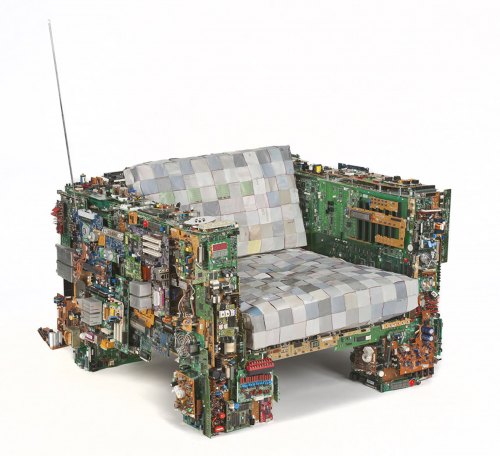 binary chair | benjamin rollins caldwell | industry gallery | 2013
binary chair | benjamin rollins caldwell | industry gallery | 2013
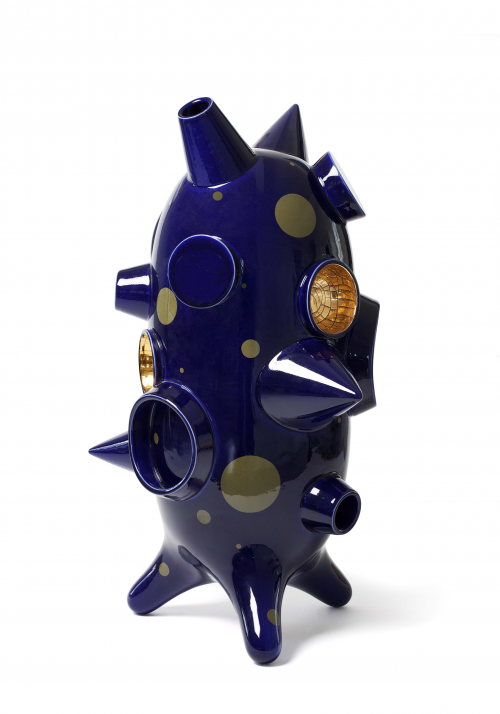 blue standing object | _michael geertsen | jason jacques inc | 2010
blue standing object | _michael geertsen | jason jacques inc | 2010
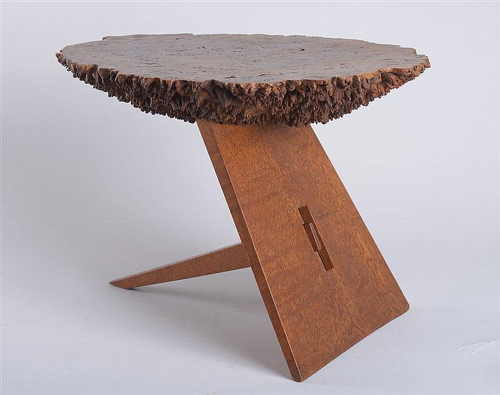 weatherbee | george nakashima | modern gallery | 1968
weatherbee | george nakashima | modern gallery | 1968
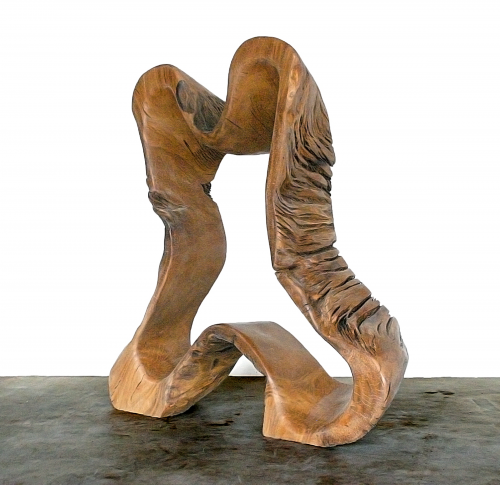 cabriuna | hugo franca | r 20th century | 2013
cabriuna | hugo franca | r 20th century | 2013
An international selection of galleries will present focused solo shows as part of the Design On/Site program. ArtFactum Gallery, Beirut, brings Marc Baroud & Marc Dibeh’s sculptural
meditations on metal frame furniture. Caroline Van Hoek, Brussels, is presenting new
jewelry works by Gijs Bakker, co-founder of the Dutch design enterprise Droog. Conceptual
jewelry will take center stage at Elisabetta Cipriani with highly-colored pieces by kinetic
and op-artist artist Carlos Cruz-Diez shown in a custom designed booth. Wonderglass,
London, will be stringing up a sublime, oneiric, contemporary glass chandelier by multidisciplinary designer Nao Tamura. The alchemy of off beat materials is at the heart of
Jonathan Muecke’s collection for Volume Gallery, which includes works in coal slag and
epoxy, carbon fiber and silicone.
This year the Design Commission for the entrance pavilion has been presented to formlessfinder, a conceptual ‘formless’ architectural practice founded by Garrett Ricciardi and Julian Rose, which invites its audience to re-learn its relationship to architecture and the constructed space. Details of formlessfinder’s Design Commission as well as Design Miami’s cultural program, including Design Talks, Design Performances, and DesignSatellites, will be announced in the coming weeks. [ design miami ] [ design log ]
[ design gtalleries ]
Antonella Villanova/ Florence
Carpenters Workshop Gallery/ London & Paris
Casati Gallery/ Chicago
Cristina Grajales Gallery/ New York
Demisch Danant/ New York
Didier Ltd/ London
Erastudio Apartment-Gallery/ Milan
Fine Art Silver/ Brussels
Gabrielle Ammann // Gallery/ Cologne
Galerie BSL/ Paris
Galerie Downtown – François Laffanour/ Paris
Galerie Jacques Lacoste/ Paris
Galerie Maria Wettergren
Galerie kreo/ Paris
Galerie Patrick Seguin/ Paris
Gallery SEOMI/ Seoul & Los Angeles
ostler Burrows/ New York
Jason Jacques Inc/ New York
Jousse Entreprise/ Paris
Louisa Guinness Gallery/ London
Magen H Gallery/ New York
Mark McDonald/ Hudson
Moderne Gallery/ Philadelphia
Ornamentum/ Hudson
Pierre Marie Giraud/ Brussels
Priveekollektie Contemporary Art + Design/ Heusden aan de Maas
R 20th Century/ New York
Sebastian + Barquet/ New York
Victor Hunt Designart Dealer/ Brussels
[ design on/site galleries ]
ArtFactum Gallery/ Beirut presenting Marc Baroud & Marc Dibeh
Caroline Van Hoek/ Brussels presenting Gijs Bakker
Elisabetta Cipriani/ London presenting Carlos Cruz-Diez
Industry Gallery/ Washington presenting Benjamin Rollins Caldwell
Volume Gallery/ Chicago presenting Jonathan Muecke
Wonderglass/ London presenting Nao Tamura
4 > 8 december | 3 december preview day
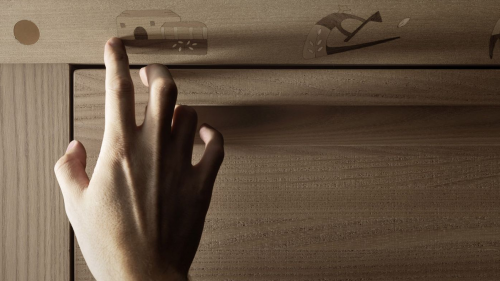 >click > enlarge
>click > enlarge
The artisan appears in 1993 when the ‘Fabula‘ model was launched, the first kitchen with colored wood and doors inlaid with pictograms. For the designer Gabriele Centazzo, it represented the Mediterranean dream. In 2009 Valcucine presented ‘Invitrum‘, the first 100% recyclable base unit in glass and aluminum. In 2013, both art and tech reappear together as Valcucine’s Milan showroom creatively presents their master craftsmen who set up real workshops showing how they create inlays, mosaics and carvings. We also see the reappearance of Centazzo designing SineTempore (without time), a kitchen conceived to express the values of tradition through the recovery of various ancient handicraft techniques.
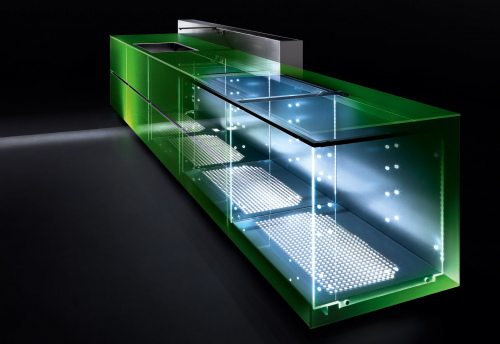
With Invitrum, the production process of recycled aluminium has the advantage of consuming only one-twentieth of the energy needed to obtain primary aluminium. Traditional kitchens usually supply base units that are installed side-by-side which means that the chipboard side panel is doubled; Valcucine’s structure has simply a single carcass side in glass. The new glass system is designed to be easily disassembled using only mechanical joints instead of glues.
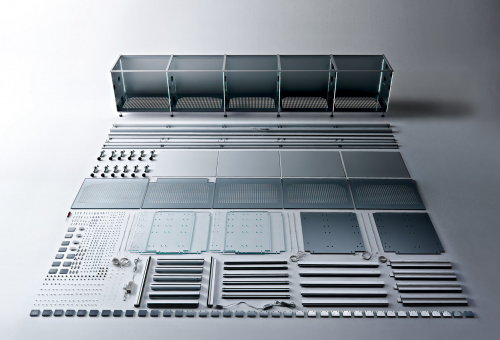
In the showroom product technicians shared the tests, here Diego Skerlic, a quality official, uses an eyedropper of various stain producing ingredients such as coffee and red wine, as he helps develop fully resistant long-lasting materials.
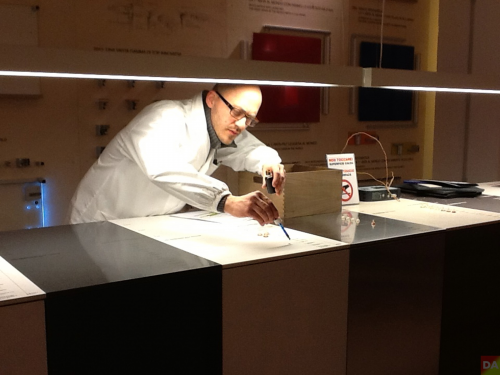
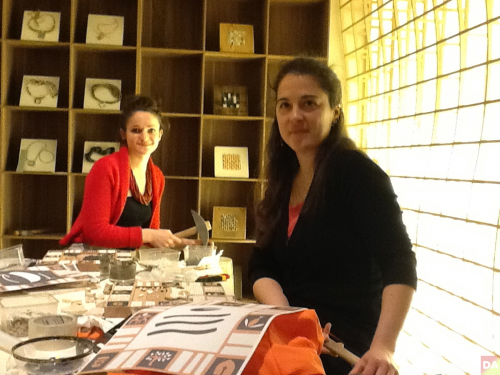
Laura Carraro and Lisa Battistutta were introduced to Valcucine as mosaic art students and the two continue to collaborate and create for them.
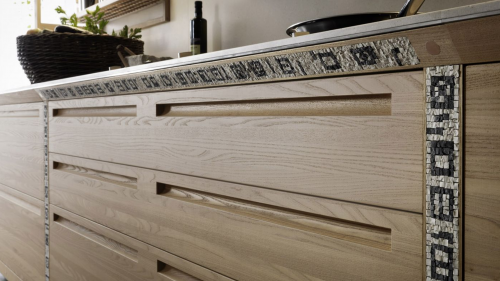
above and below, kitchen program SineTemporare | 2013
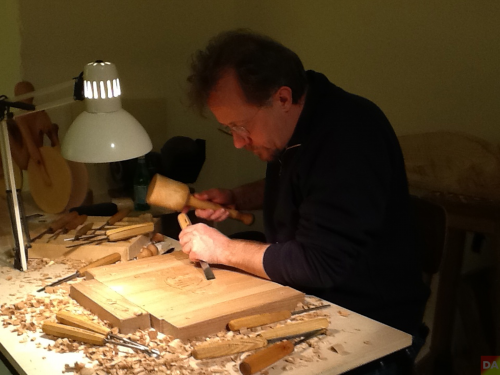
Wood sculpture Padovan Giovanni carves away.
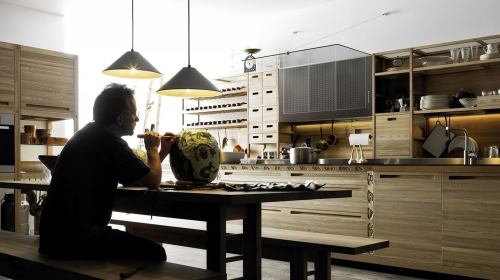
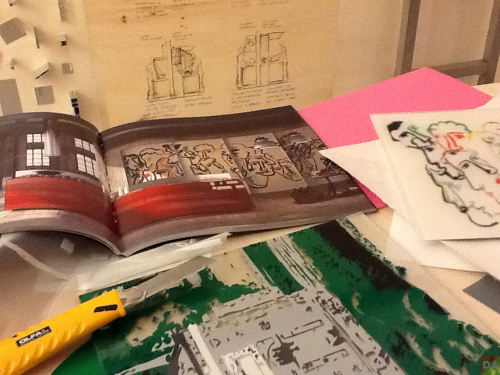
Most recently, after three years of research, Valcucine has developed a technique to make inlaid art on glass. The highly technological process is rooted in handmade craft and makes it possible to personalize a kitchen with ideas offered by artists, architects and designer or even by the home owner.
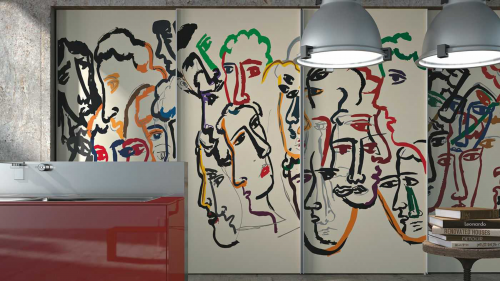 artematica vitrum arte programme
artematica vitrum arte programme
And even more recently Chicago graphic designer Rick Valicenti and John Pobojewski of (thirst) alerts us to the very same process used for the Valcucine Chicago showroom for NeoCon 2013. The installation of The Elizabeth Project (formally named E) consist of ribbons of colored vinyl cut by hand and infused in glass. ‘Elizabeth’ is the daughter of Chicago architect Gordon Gill: the collaboration done in 2009 when Elizabeth was nine. thirst used motion capture technology and custom software to sample Elizabeth’s energy as she danced in place. [ details ]
[ valcucine ]

We were quite looking forward to talk to Job Smeets and Nynke Tynagel of Studio Job, whose creations can stress art as the counterpoint to design, can be wildly fun, unpredictable and we anticipated an equally lively chat. A healthy body of work affirms modernism though their sculptural translations also resemble sophisticated contraptionisms of time-traveling with Jules Verne. Tonight, Studio Job is presenting their new ‘Job Office’ collection for Lensvelt. The collection consists of a buffet cabinet, a desk, and an LED lamp and is an extension of the Job Cabinet launched by Studio Job in Milan 2011 – a metal cabinet with a single door that also comes with a gold-colored key. The venue, the refectory within the monastery within the Museum of Science and Technology. The walls and ceilings covered with beautiful 18th-century Sala del Cenacolo frescoes. ‘The Wall’ is our background music.

click > enlarge
>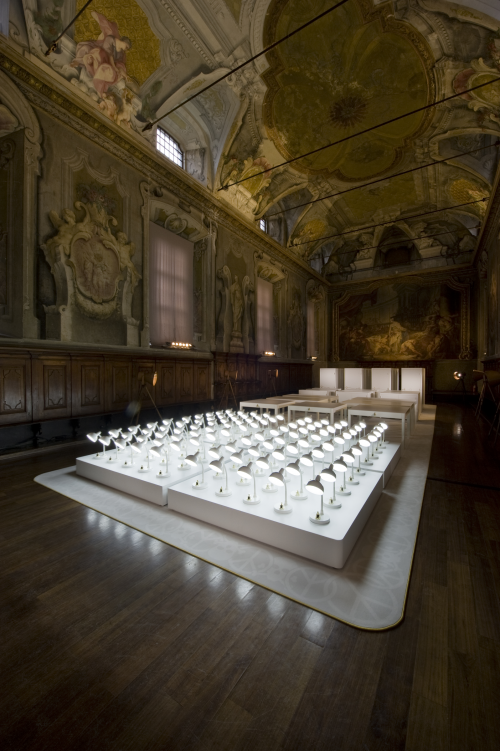
[DA] The chosen space is extremely surreal. And the installation’s teaser promotion is of famous people with golden noses. Job, please explain this concept for us.
[JOB] Do you know what stekkerdoos means?
[DA] Please tell us.
[JOB] The concept is ‘stekkerdoos’ translated from Dutch means multiple socket, in this case, my nose, my socket. And you know, I have a strange nose. In high school I was told my nose looked like a socket. But on the other hand, the nose is also a handle to open a drawer in an office desk.
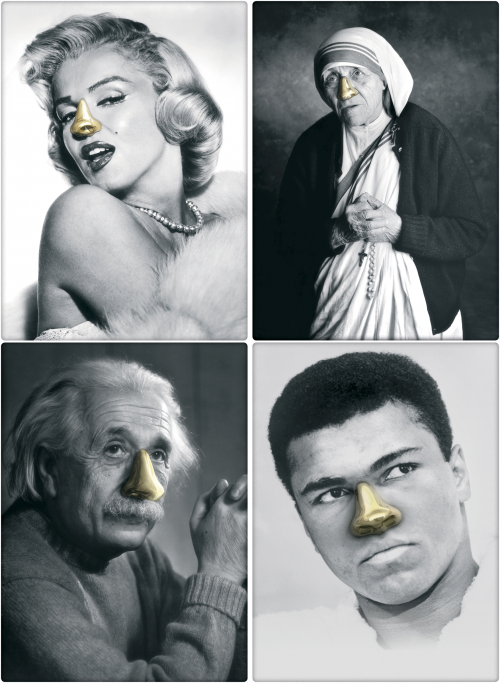
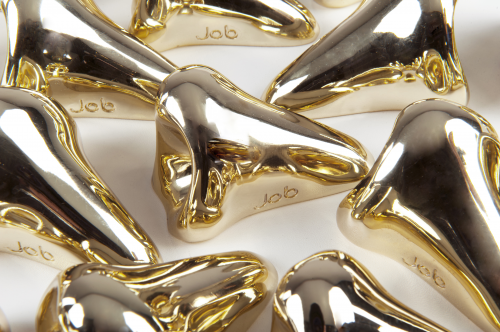
[DA] This is a story about turning a negative into a positive.
[JOB] I think so. Yes feel the handle, feel the nostrils. Finally you can open a drawer by putting your fingers in the nostrils and you don’t have to worry about your mother saying you can’t do that. After all these years.
[DA] An ultimate revenge.
[JOB] Yes, exactly.
[DA] When did you think of this concept.
[JOB] I knew it when I was 15. It just took 25 years to make it happen.
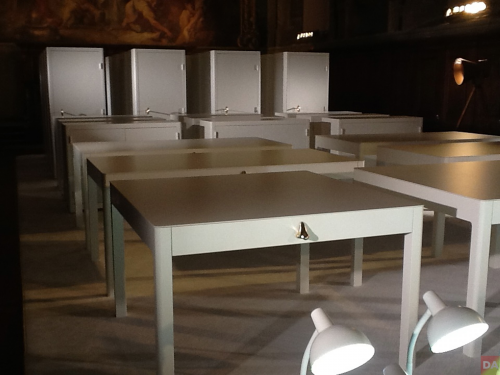
[DA] Tell us about the ‘Job Office’ collection.
[JOB] Lensvelt makes office furniture and people today are working more and more in their home. So we are trying to personalize this experience. These pieces are very modernistic, in a modern style, like this lamp that goes back to the 50s and we also merged a sculptural presence to the pieces. A merger of the right industrial product with the gilded sculpture.
[DA] The nose is a very organic statement and the gilded button is huge.
[JOB] Yes, regarding the nose I was looking for a handle and maybe we were looking for a human statement. An the most iconic thing about the lamp is this big on/off button. And there are 100 lamps in this installation celebrating 100 years of Lensvelt. Like a big KGB office with all these lights for interrogation.

[DA] This space, this installation. Reminds me of the crazy offices in the movie ‘Brazil’.
[JOB] Exactly. This reminds me of the Pink Floyd movie ‘The Wall’ where you could see all the hammers. That’s the reason for ‘The Wall’ background music.
[DA] How does humor play into your design concepts.
[JOB] Humor is quite important. Human beings are already too serious, especially taking themselves too serious.
[DA] Several designers we talked to mention noise and chaos and they are providing ‘peace’ and ‘natural’.
[JOB] Peace and natural is not new in design. All of us are just mirrors. I feel our design is reflecting what we are up to and our environment isn’t that peaceful. And our environment is very surreal, it’s never what you think it is.
[DA] What expression are we looking for here. Something good looking?
[JOB] No. We must all admit that we are like those sparrows who try to steal the bling. We are all attracted to stuff that shines. And of course we are attracted to beautiful things and I like to play with that a little bit. But I’m not interested in aesthetics at all. I’m interested in how humanity functions, in the seducing quality of the bling bling. The sculptural aspect can be seen in our work: We have created a lot of huge gold sculptures. And the office is all about function and we about are looking for a fresh a personal look for office furniture.
[DA] Is there a sustainable aspect of the office collection.
[JOB] Sustainable is important but the term is a marketing term. What we do is make unique pieces that are well made, and some of the pieces cost quite a bit. These pieces will be handed down from generation to generation, never thrown away. Some are museum quality and they will last a long time. It could be that 100 years from now there will be more Studio Job products around than Ikea and they are so much bigger.
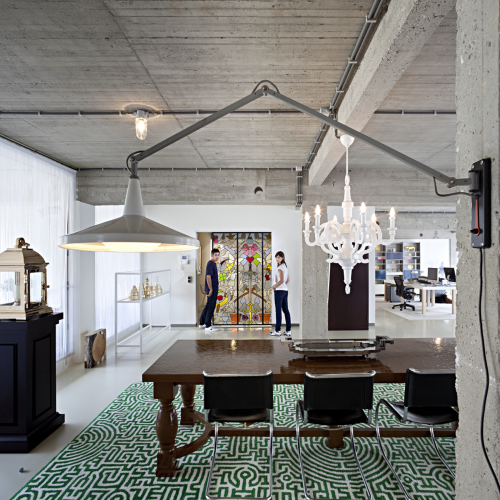
job and nynke in the studio | photo: t. wolzak
[DA] What is your office environment like?
[JOB] Nynke and I work in a concrete environment, like a bunker. We are surrounded by modern design from the 50s and 60s. I like the period a lot, the post war reconstruction period. If I had lived in the 50s our work would reflect that period. I’m sure if Pierre Jeanneret or Jean Prouvé lived today their work would look so different. That’s what I mean about reflecting time, the work is really a diary. It’s such a tragic thing to be a designer when the only thing we can do is dematerialize. But this can be inspiring, if you can be as less a designer as possible and maybe make art. The conflict of design and art is quite interesting.
[DA] Everything here tonight for Lensvelt are production pieces. Though your body of work includes a great deal of collectables.
[JOB] Studio Job is in the collections of maybe 40 museums. And we have many solos exhibitions around the world. So we enjoy and thrive on limited edition sculptural pieces but we are also invited by producers to create production objects.
[DA] Is the function different with limited vs production.
[JOB] It can be. It really has to do with the working with the brands and their objectives. But our mindset is to push the solutions as far as we can. I see this philosophy in fashion, in haute couture, which has a strong sculptural aspect to it. And haute couture inspires the creation and production of products which still possess the sculptural quality but becomes more reachable to the larger audience.

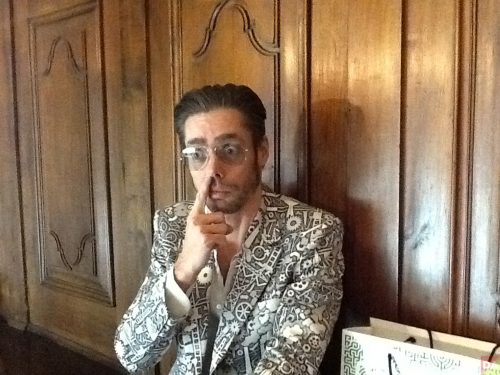
[ Dutch Profiles ] are short documentaries about architects, graphic, product and fashion designers in the Netherlands. The series debuted in 2009 and there are currently 85 videos plus 10 in production to date.
[ milan 2013 ] 1/7> job office collection | lensvelt | 201319/21> art defender | jaguar land rover | 2013
22/24> scenography | viktor & rolf | 2013 | photo: p. stigter
25> paper patchwork collection | moooi | 2013
28/30> studio job house, kempen | 2011 | photo: r. kot
31/33> firmship fs 42 | 2011
34> studio job gallery antwerp | 2009 | photo: r. kot
35> studio job atelier, netherlands | 2013 | photo: blommers/schumm
36> nynke tynagel | job smeets | 2013
[ studio job ] [lensvelt ] [ salone internazionale del mobile ]

Neocon 2013 in its entirety represented an incremental slightly better statement overall than previous iterations. Nothing breakthrough, though not of no consequence as there were several trends worth mentioning.
[ trends ]
1> Less playful, more formal….but not too formal. Patricia Urquiola‘s couch – conference seating with high backs for semi-privacy. The lines, and surfaces are shifting towards the more organic, while colors remain subdued with lots of white.
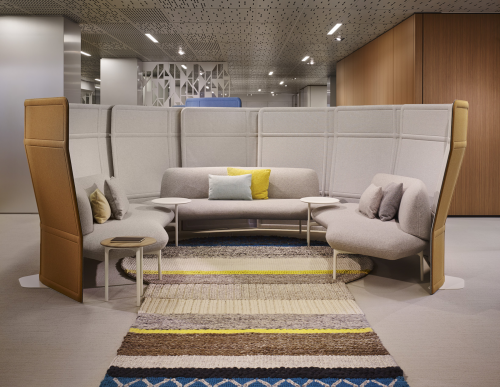 patricia urquiola | haworth | 2014
patricia urquiola | haworth | 2014
2> Fusion of office and home. Some showrooms used the word ‘crossover’ future but I like ‘indie’ as in “independence’ where the worker has a great deal more freedom to choose their working environment. Toan Nguyen‘s Lagunitas Lounge system looks like a living room sofa when in a home environment. Is the contract business model aiming at the residential environment for growth? I think so…
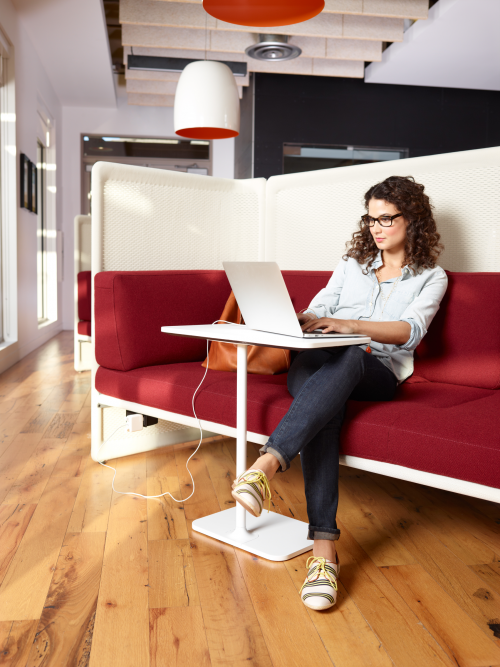 lagunitas lounge and table | toan nguyen | coalesse | 2013
lagunitas lounge and table | toan nguyen | coalesse | 2013
3> More personal space. Ties in with “indie” where at Steelcase there were pod-like rooms which could be customized by each visitor, or private phone and video conference space, chairs with extra high backs and sides, some even enclosed.
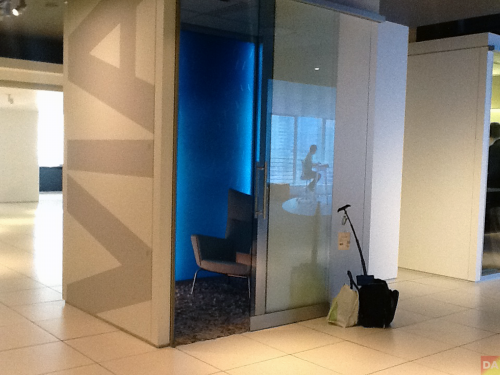 mood pod provides personal ambiance control | steelcase | 2013
mood pod provides personal ambiance control | steelcase | 2013
[ brands ]
Coalesse > working with established ‘design’ designers on the way to become the “Moroso” of the contract business. note: more details via interviews with Massaud and Nguyen coming soon.
 toan nguyen in his lagunitas lounge chair with table | coalesse
toan nguyen in his lagunitas lounge chair with table | coalesse
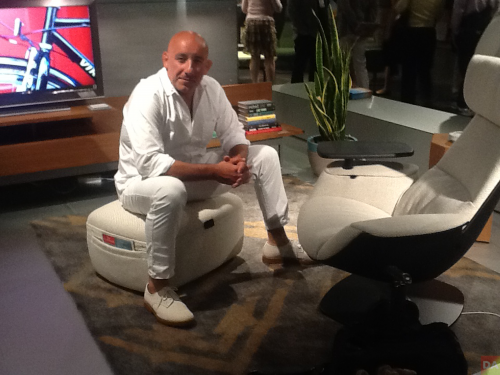 jean-marie massaud on ottoman of massaud collection work lounge | coalesse
jean-marie massaud on ottoman of massaud collection work lounge | coalesse
Designtex > creative repurposing of materials. Loop to Loop is the first (and greenest at this moment) upholstery made from recycling already recycled textile waste. note: more details via interview with ceo Susan Lyons coming soon.
 loop to loop | designtex | 2013
loop to loop | designtex | 2013
Haworth > The new break-thru BlueScape communication concept offering 1,000 sq/ft of screen real estate, in real-time, worldwide.
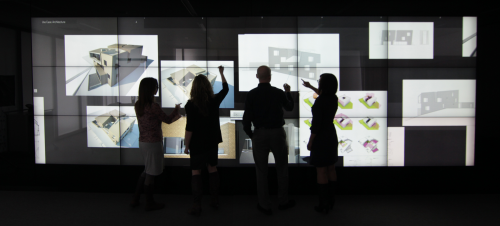 bluescape | haworth & obscura digital | 2013
bluescape | haworth & obscura digital | 2013
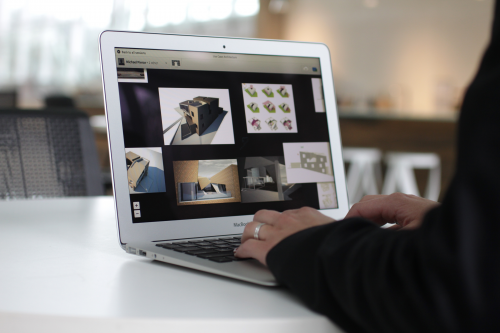
Knoll > A focus on the big boys with Rem Koolhaas “piece de resistance” (04 counter) that may be the first DesignART piece of the contract market
Steelcase > Their focus on technology vs furniture. The v.i.a. (vertical intelligent architecture) is extremely technical and analytical.
Technion > Offered most clean and minimal solutions. Such as the Interpret System
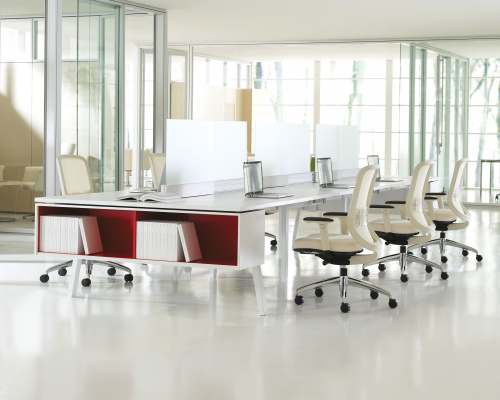 interpret | technion | 2013
interpret | technion | 2013
Vitra > Very clever ‘indie’ desk and seating solutions by the Bouroullec’s.
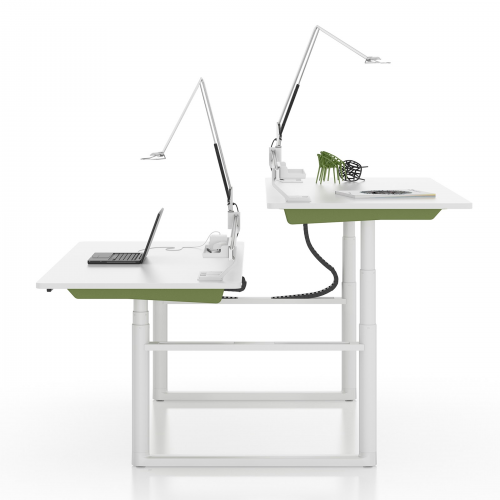 tyde | erwan and ronan bouroullec| vitra | 2013
tyde | erwan and ronan bouroullec| vitra | 2013
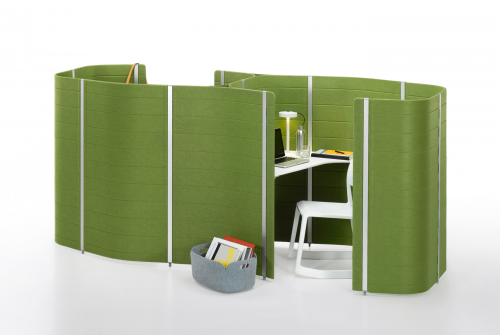 workbay | erwan and ronan bouroullec| vitra | 2013
workbay | erwan and ronan bouroullec| vitra | 2013
All content ©2007 > 2024 DesignApplause